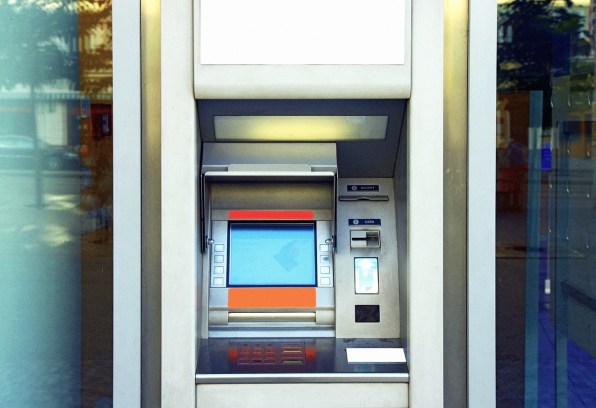Design a Use Case Diagram for Atm
It took some time to endear Americans to the Automated Teller Machine, the ubiquitous piece of technology that dots the entryways of banks, grocery stores, and convenience stores all over the country. When the first premiered in the 1960s, a third of America didn't use a bank–many employees were paid in cash, and department stores would happily cash a check for you. To convince the public to use the often clunky, unreliable machines, banks even went so far as to hire Star Trek actor Leonard Nimoy "to lend a space-age cred to the new machines," as Smithsonian's Linda Rodriguez McRobbie documents in a fascinating feature tracing the origin story of the ATM and the automatic banking service's eventual (though not always certain) rise through the American economic landscape. Throughout its history, banks have shaped the experience design of ATMs to lure and retain customers, a trend that continues even into the 21st century.

Though ATMs made their debut, in many different forms, starting in the '60s, they weren't widely adopted and standardized by most banks until the '80s. As McRobbie writes, it was hard to get people to fundamentally change the way they'd handled money their whole lives. Banks had to really sell the notion of getting cash out of a machine:
Some banks tried to smooth over that angst by personifying their machines, often in slightly weird ways–a Florida bank introduced its customers to Miss X, the truly creepy clown make-upped 'Sleepless Teller', while First National promoted 'Buttons, the Personal Touch Teller', an anthropomorphized cartoon cash machine. Others, according to a New York Times article from 1977, gave away coupons for ice cream and hamburgers with ATM cards, hired Star Trek actor Leonard Nimoy to lend a space-age cred to the new machines, or gave their employees 25 to 75 cents for each customer they were able to convince to use the machines as an incentive.
It's a quaint notion for anyone stuck paying a surcharge to use a non-bank ATM today. Obviously, ATM usage did eventually take off. But now, usage is dwindling, according to some measures, at least in America. Independent ATM operators are reporting a decline in revenues, and the American Banking Association says the number of banking customers who use ATMs to manage their accounts has gone down to 11% from 17% in 2009, as Smithsonian notes. Square, Venmo, mobile check deposits, and other innovations make it easier than ever to pay and get paid without ever visiting a physical bank.
However, as usage of ATMs declines, banks are rethinking the user experience they provide. Should they be more than just automated cash-grabs?
Counter-intuitively, banks are starting to replace the automated 'a' in ATM with an actual human. Some Bank of America ATMs, for example, now offer 'teller assist', which connects customers to a real teller sitting in a call centre via a two-way video enabled interface, should they want to (the service, however, operates on limited hours.) Diebold's biggest competitor, NCR, rolled out 350 of its 'interactive teller' machines in 2013.
It's a version of the 'help button', which would connect a user to a real human, and that [Diebold's Chief Innovation Officer Frank] Natoli envisions more ATMs coming equipped with in the future: 'Consumers, when they know what they're doing, prefer to serve themselves and do it," he said. "But when they need help, they want it to be accurate and efficient.'
Or, at least, could they be a better version of the experience of using a traditional teller?
The newer wave of ATMs is really about refiguring of the traditional branch, for example, Chase Bank's Grand Central Station branch which has ATMs on hand to do a wide variety of activities that tellers used to do, such as distribute $1 and $5 bills for exact change withdrawals. In the center of the space is a concierge desk, allowing customers who need more personalized service to get it.
It's uncertain whether these new functions can save the ATM from obsolescence in the face of mobile banking and ubiquitous credit/debit acceptance (even at once cash-only places like the farmer's market). Yet in certain corners of the world, cash is still king–my Brooklyn neighborhood still very much runs on a cash economy, for instance, and non-bank ATMs are hidden in a corner of every discount store. Even so, the traditional ATM certainly is ripe for a redesign.
Read more about the history and future of the ATM from Smithsonian magazine.
Design a Use Case Diagram for Atm
Source: https://www.fastcompany.com/3040725/the-history-of-atm-design-is-crazy
0 Response to "Design a Use Case Diagram for Atm"
Post a Comment